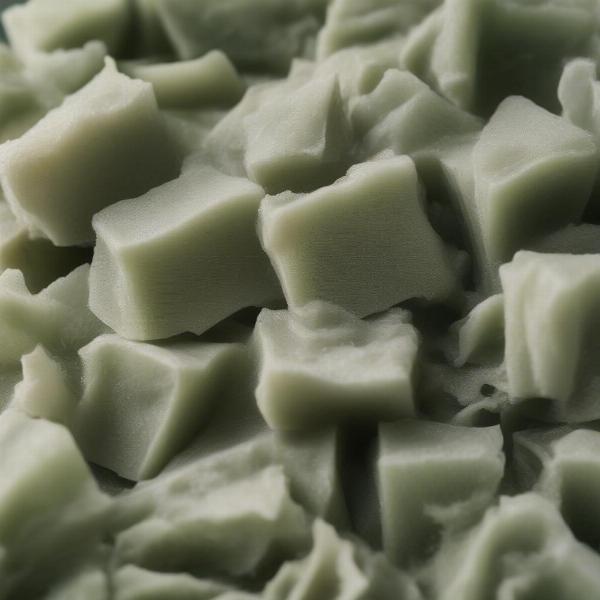Frozen tripe for dogs has gained popularity as a nutritious and palatable food option. But what exactly is it, and is it the right choice for your canine companion? This guide delves into the benefits, risks, and practicalities of feeding your dog frozen tripe, offering valuable insights for both novice and experienced dog owners.
Understanding Tripe and its Benefits
Tripe is the edible lining of a ruminant animal’s stomach, most commonly from cows. It’s packed with nutrients, including essential amino acids, vitamins, and minerals like calcium and phosphorus.  Frozen green tripe for dogs Unlike processed dog foods, tripe is a natural, unprocessed food source that closely resembles the diet of wild canines. It’s highly digestible, making it a suitable option for dogs with sensitive stomachs. Proponents of raw or minimally processed diets often favor tripe for its potential to boost a dog’s immune system and improve digestion.
Frozen green tripe for dogs Unlike processed dog foods, tripe is a natural, unprocessed food source that closely resembles the diet of wild canines. It’s highly digestible, making it a suitable option for dogs with sensitive stomachs. Proponents of raw or minimally processed diets often favor tripe for its potential to boost a dog’s immune system and improve digestion.
Green Tripe vs. Bleached Tripe: What’s the Difference?
When discussing tripe for dogs, it’s important to distinguish between green tripe and bleached tripe. Green tripe refers to the unprocessed, raw stomach lining, retaining its natural color and nutrients. This is the type generally recommended for dogs. Bleached tripe, on the other hand, has been cleaned and processed, resulting in a whiter appearance but a significant loss of beneficial bacteria and enzymes. Bleached tripe is less nutritious and may contain harmful chemicals used in the bleaching process.
Is Frozen Tripe Safe for Dogs?
Freezing tripe is a safe and effective way to preserve its nutrients and prevent bacterial growth. When handled and stored properly, frozen tripe can be a healthy addition to a dog’s diet. However, as with any raw food, there is always a risk of bacterial contamination. Always source frozen tripe from reputable suppliers who adhere to strict hygiene standards. is tripe good for dogs
How to Safely Prepare and Serve Frozen Tripe
Thawing frozen tripe is straightforward. Simply place the desired portion in the refrigerator overnight or submerge it in cold water for a few hours. Avoid using hot water, as this can promote bacterial growth. Once thawed, serve the tripe to your dog. You can feed it as a standalone meal or mix it with other ingredients like vegetables or kibble.
Potential Benefits of Frozen Tripe for Dogs
- Improved Digestion: The enzymes and probiotics in green tripe can aid digestion and promote gut health.
- Enhanced Palatability: Many dogs find the strong aroma and flavor of tripe incredibly appealing.
- Boost in Nutrient Intake: Tripe is a rich source of essential vitamins, minerals, and amino acids.
- Healthier Skin and Coat: The nutrients in tripe can contribute to a healthier skin and a shinier coat.
Potential Drawbacks of Frozen Tripe for Dogs
- Risk of Bacterial Contamination: As with any raw food, there’s a risk of contamination if not handled properly.
- Strong Odor: Tripe has a distinctive, pungent smell that some owners find unpleasant.
- Potential for Mess: The texture of tripe can make it a bit messy to handle and feed.
- dehydrated raw dog food
How Much Frozen Tripe Should I Feed My Dog?
The amount of frozen tripe you should feed your dog depends on factors such as their size, age, activity level, and overall health. It’s always best to start with small portions and gradually increase the amount as needed. Consult with your veterinarian to determine the appropriate serving size for your dog.
Conclusion
Frozen tripe can be a valuable addition to a dog’s diet, offering numerous nutritional benefits. However, it’s essential to source it from reputable suppliers, handle it safely, and feed it in appropriate portions. By understanding the potential benefits and risks, you can make an informed decision about whether frozen tripe is the right choice for your furry friend. stick dog books in order
FAQs
- Can puppies eat frozen tripe? Yes, puppies can eat frozen tripe, but it should be introduced gradually and in small portions.
- Is frozen tripe a complete and balanced diet for dogs? While highly nutritious, tripe may not provide all the nutrients a dog needs. Consult your vet about balancing your dog’s diet.
- How do I store frozen tripe? Store frozen tripe in an airtight container in the freezer.
- What should I do if my dog experiences digestive upset after eating frozen tripe? Discontinue feeding tripe and consult your veterinarian.
- Can I mix frozen tripe with my dog’s regular food? Yes, you can mix frozen tripe with kibble or other dog food.
- Where can I buy high-quality frozen tripe for my dog? Look for reputable pet food suppliers or local butchers specializing in pet food.
- Is it necessary to supplement my dog’s diet if I feed them frozen tripe regularly? This depends on your dog’s individual needs. Consult with your veterinarian.
ILM Dog is a leading online resource dedicated to providing dog owners worldwide with reliable and practical advice on all aspects of dog care. We offer expert guidance on breed selection, health, training, nutrition, grooming, exercise, and much more. Our content is designed to empower dog owners of all experience levels to provide the best possible care for their canine companions. We are passionate about helping you build a strong and loving bond with your dog. For expert advice tailored to your dog’s specific needs, contact us at [email protected] or call us at +44 20-3965-8624. ILM Dog is here to support you every step of the way.